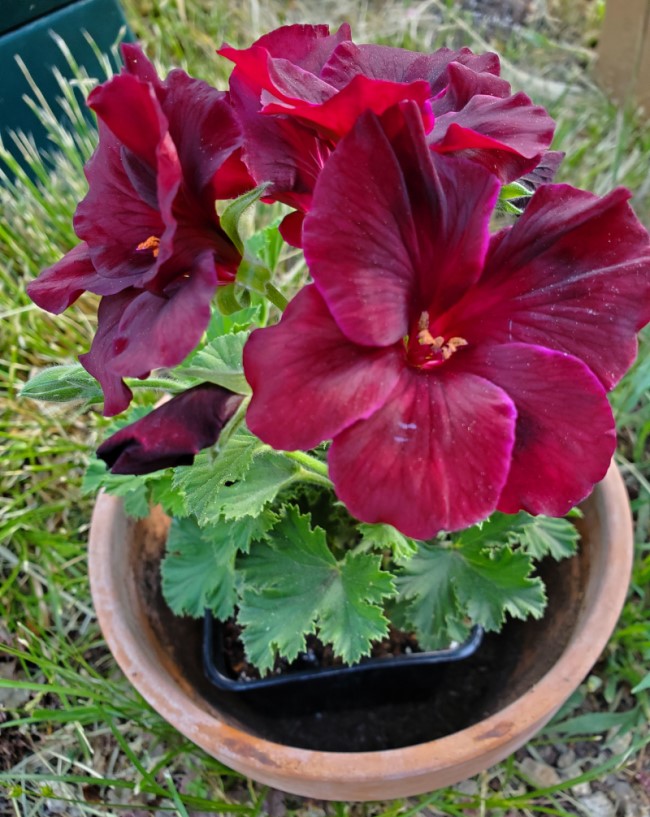Seasonal Gardening: Pots and Containers in Summer
By Josh Reilly
Most gardeners have at least a few pots around the yard. You can move pots seasonally, if your plants need more, or less, sun in summer, or frost protection in winter in a greenhouse or under your roof eaves. You may just like moving things around from time to time. Pots are, mostly, gopher-proof (animals keep effort and reward in balance). Like me, you might take pleasure in the way pots and containers look, both in terms of their appearance and the way mature plants cascade down around their sides. Pot up invasive plants that should not go in the ground, such as most mints or “running” varieties of bamboo. Golden bamboo (Phyllostachys aurea), goes brilliantly into a large pot. In the ground it will own your yard in 10 to 15 years. Put that bad boy in a big, colorful pot (or use root barriers, a subject for another column).
There are, of course, maintenance chores required in a garden full of pots and containers. First, remember that you will have to re-pot larger subjects every few years to prevent plants from becoming rootbound. Second, potted subjects always need more water and often fertilizer. Remember to choose the right types of pots for your plant and location. I like plastic hanging pots because they are lightweight, durable, and easy to manage. Hanging pots generally drain faster. Pots on the ground, plastic or clay, get a bit less air flow. For pots on my redwood deck, I use metal ring stands to increase drainage and keep indelible and unsightly round water stains off the wood. In the yard, I only use plastic pots as a temporary home for plants that are going in the ground later.
The nursery industry sells plants when they are flowering, understandably. Buyers want to know what they will look like flowering. Flowering time, however, is almost never the best planting time. In general, the best planting time for perennials, shrubs, and trees is fall, before the first rains. This is true for pots and soil plantings. So, as days get shorter and nights cool, my flowering acquisitions wait in (mostly plastic) pots.
As for stoneware, there are some useful distinctions. Glazed pots do not drain as well as bare clay (terracotta). Dark glaze may absorb more solar radiation, warming up the roots and drying out the pot. Remember that glazed clay fired at low temperatures will likely chip and degrade faster than “high-fired” clay. Soapstone pots are gorgeous, but nothing seems to thrive in mine. I don’t know why. They are also heavy as lead. Just an observation; consider accordingly. Wood planter boxes drain well and work fine, mostly, but may not last all that long in our rainy winters. I have several glazed metal planter boxes on my patio that have a nice low-key look and seem likely to long outlive their gardener. They are, however, quite heavy. Mountain Feed and Seed and Scotts Valley Scarborough Garden Center have great selections of pots and containers.
With rare exception, always use a very well-drained potting soil mixture for pots and containers. I add redwood bark mini-mulch, homemade compost, and sometimes vermiculite to my store-bought potting soil for drainage and nutrition. I do not put the mini-mulch (or rock or sand) at the bottom. This controversial practice has its adherents, but it did not work for me. Learn from my blunders, dear reader. I mix these components in thoroughly.
Many local gardeners have drip systems on timers. I have drip irrigation in the yard, but not for the pots. It’s great if you are away regularly and need to make sure things are watered. Maybe this year I’ll finally install it. For now, I enjoy being out in the garden watering.
Josh Reilly, aka Uncle Skip, writes about seasonal gardening from his home in beautiful Ben Lomond.
Featured photo: Pelargonium peltatum “Dark Red Blizzard” commonly known as ivy geranium. Photo by Josh Reilly
The San Lorenzo Valley Post is your essential guide to life in the Santa Cruz Mountains. We're dedicated to delivering the latest news, events, and stories that matter to our community. From local government to schools, from environmental issues to the arts, we're committed to providing comprehensive and unbiased coverage. We believe in the power of community journalism and strive to be a platform for diverse voices.





